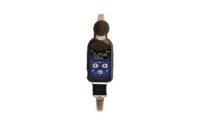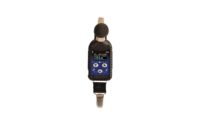
The National Institute for Occupational Safety and Health (NIOSH) recommends removing hazardous noise from the workplace whenever possible and using hearing protectors in those situations where dangerous noise exposures have not yet been controlled or eliminated. Determining noise severity requires taking regular measurements with professional-grade instruments to assess whether workers are being exposed to too much noise.
Although excessive noise exposure is mainly a problem in manufacturing industries, the assessment of personal noise exposure at work must be carried out in all companies to assure that noise levels are not being exceeded.
As a simple rule of thumb, if you must raise your voice to hold a conversation with someone at work then it is likely that the noise level is around 85 dB and measurements must be carried out to verify the true levels. Overexposure to high noise levels will lead in time to deterioration in hearing capability. Unfortunately, this is a one-way reduction; it does not improve if the noise exposure is stopped.
What the regs say
National regulations exist in almost all industrialized countries that impose limits on the amount of noise allowed in the workplace. These are usually expressed as an average level as an ‘A’ weighted noise level over a working day with an overall limit on any single high impulsive noise level. The amount of noise during the normal working day is expressed as having been received for a standard 8-hour period no matter how long the actual worker’s day lasts. This is called the time weighted average level or TWA. An overall upper limit on the highest single noise level that can be tolerated is also specified in many regulations. This is usually measured as the peak noise level measured without the effect of the 'A’ frequency weighting at the low frequencies as a ‘C’ or linear level.
The TWA is usually given as a decibel value such as 90 dBA for 8 hours but can also be expressed as a noise dose where the 100 percent allowable noise dose is also equivalent to a continuous noise level of 90 dB for the 8 hours.
In European regulations the limit is called the “daily personal exposure level” written as LEP,d. This is similar in concept to the American OSHA noise limit although they are not measured or calculated in exactly the same way. In the U.S., a threshold noise level is specified that ignores noise levels below the threshold value as not being significant compared with the higher levels of noise experienced in a typical workplace. Certain tasks must be carried out when noise exposure exceeds the stated “action level”, usually set at 85 dBA for an 8-hour day period.
Types of noise meters
The TWA or noise dose can be found by measurements with a traditional sound level meter or with a personal noise dosimeter.
The sound level meter is a hand-held instrument used by a qualified safety officer to gather the different noise levels produced by different machines or work processes.
The personal noise dosimeter is a small noise meter worn on the worker for as long as the whole day if necessary. It collects all the noise the worker receives by means of a small microphone remotely mounted on the shoulder close to the ear.
Multiple measurements in noise dosimeters allow a number of workers to be monitored without having to download the results after each separate measurement. An even smaller instrument called a micro noise dosimeter may also be used as a dosimeter. This unit clips on to the shoulder area close to the ear and has an integral microphone, power supply and memory to store the time history data. It is quite small and inconspicuous when in use.
Logging sound levels
At the end of the measurements, using either the sound level meter or the noise dosimeter, the safety officer or occupational hygienist can review the noise readings and compare against the limits in force. Instruments that “log” the noise levels during the measurements are very useful to see how the noise exposure changed during the day. In this way any remedial work to reduce the overall noise exposure can be properly directed to those times of the day when the noise levels were highest. Direct printouts from the noise meters can assist the operator to prepare a record for the wearer’s personnel file. Storage of noise readings in the instrument’s memory allows the noise measurements to be transferred to a personal computer for permanent archiving.
Noise reduction strategies
When noise measurements show that the levels are too high, steps must be taken to reduce noise exposure for the workforce. Ideally this should be done by engineering means to reduce the noise levels of the machines or manufacturing processes.
As an interim solution it may be necessary to provide personal hearing protection to workers. These are in the form of earmuffs that fit over the ears, or earplugs that fit inside the ear canal. More noise measurements are required to be able to choose the correct protectors. These should be either octave band measurements using an octave band analyzer or a simpler method to find the noise reduction rating, NRR. The NRR value is found by using an instrument that can measure the workplace noise using the ‘A’ and ‘C’ frequency corrections. The NRR is then found from the difference between the overall ‘C’ and ‘A’ weighted noise levels.

